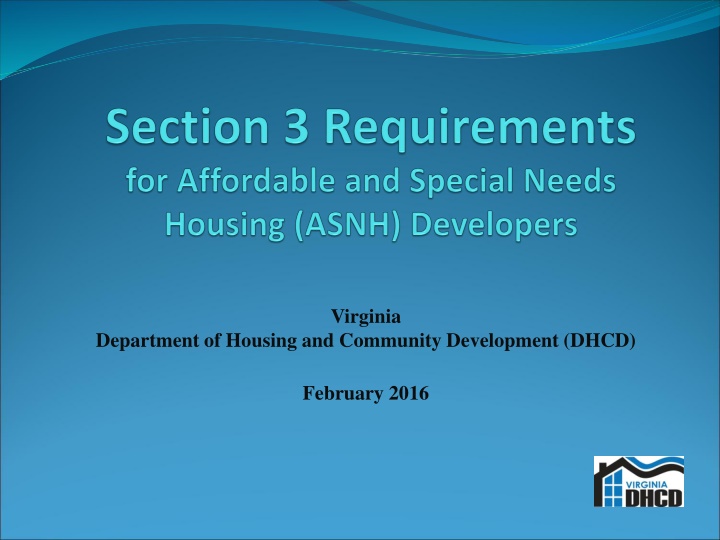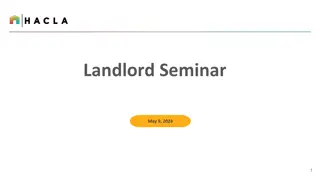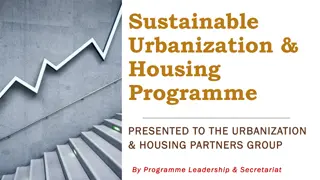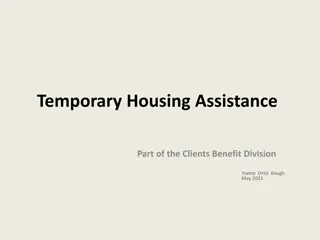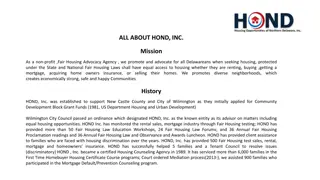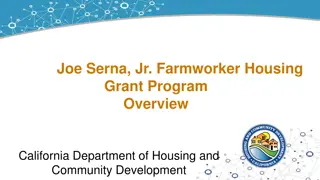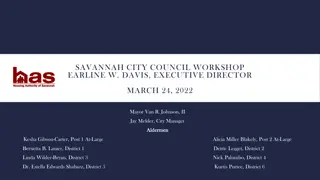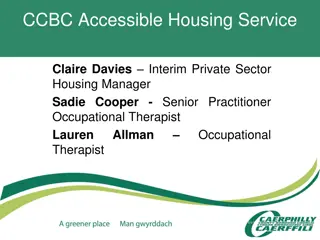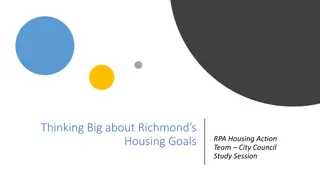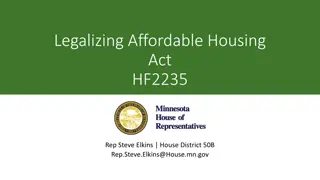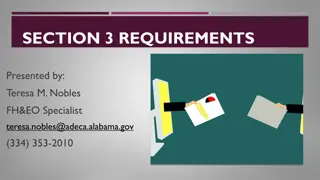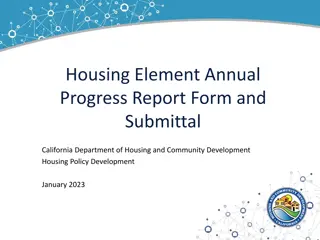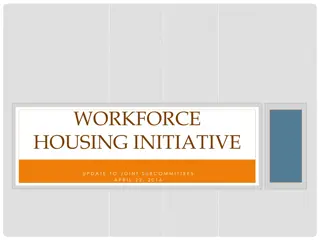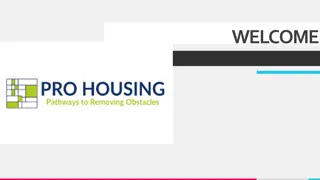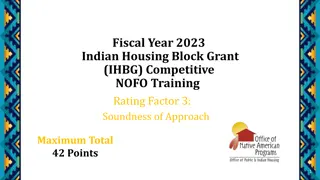Section 3 Requirements for Housing and Community Development
Section 3 of the Housing & Urban Development Act of 1968 mandates employment, job training, and contracting opportunities for low-income individuals in HUD-funded neighborhoods. Learn about when it applies, minimum goals, resident qualifications, business criteria, and intended beneficiaries.
Download Presentation

Please find below an Image/Link to download the presentation.
The content on the website is provided AS IS for your information and personal use only. It may not be sold, licensed, or shared on other websites without obtaining consent from the author.If you encounter any issues during the download, it is possible that the publisher has removed the file from their server.
You are allowed to download the files provided on this website for personal or commercial use, subject to the condition that they are used lawfully. All files are the property of their respective owners.
The content on the website is provided AS IS for your information and personal use only. It may not be sold, licensed, or shared on other websites without obtaining consent from the author.
E N D
Presentation Transcript
Virginia Department of Housing and Community Development (DHCD) February 2016
What is Section 3? The Housing & Urban Development Act of 1968 requires recipients to direct employment, job training and contracting economic opportunities, to the greatest extent feasible, to low- and very low-income persons in neighborhoods where HUD funds are invested. Section 3 VDHCD Section 3 Webinar 2
When does Section 3 apply? Only to projects of a certain size and scope = All ASNH projects Section 3 All project related contracts and subcontracts (Construction or Non- Construction) $100,000 or more Applies to all project related new hires or contracting opportunities VDHCD Section 3 Webinar 3
Minimum Goals 30 - 10 - 3 Section 3 30% of new hires annually 10% of total dollar amount of covered construction contracts (annual) 3% of the total dollar amount of covered non-construction contracts (annual) VDHCD Section 3 Webinar 4
Section 3 Resident Low (80% or below AMI) and very-low (50% or below AMI) individuals living in the project area Not required to hire someone not qualified to perform job Resident of public housing Certification documentation required Section 3 Webinar 5
Residents Public Housing Resident - automatic Section 3 Persons of a metro or non-metro county who qualify as LMI They must complete a certification form VDHCD Section 3 Webinar 6
Section 3 Business 51% or more owned by Section 3 residents Has 30% or more of full-time employees who are currently Section 3 residents (or at least were within three years of hire date) Subcontracts at least 25% of all subcontracts to Section 3 businesses Certification documentation required Section 3 Webinar 7
Intended Beneficiaries Section 3 Based on income and location Race and/or gender do not apply VDHCD Section 3 Webinar 8
Compliance Must document efforts Must report annual data to DHCD If goals are not achieved grantee must document efforts and barriers Section 3 Webinar 9
Strategies Build a business registry/mailing lists Section 3 Send invites to local businesses to complete certification documents Send invites to local affordable housing agencies for distribution to their clients to become Section 3 Residents Conduct a job fair in project area VDHCD Section 3 Webinar 10
Your Responsibility Commit to Section 3 goals Implement Section 3 strategy Identify local businesses needed Mail invites for application for certification Publish advertisement (local/display) Target solicitations for job openings Add respondents to bid documents Document new hires on payrolls including Section 3 Resident certifications Section 3 VDHCD Section 3 Webinar 11
Document Document Document Section 3 If no Section 3 residents and/or firms are identified or bid, you must document efforts and any impediments. Include the following in your recruitment efforts: distribution of flyers in LMI neighborhoods, posted signs for job availability, contacted resident organizations, local CDC s and VEC s, be creative. VDHCD Section 3 Webinar 12
Required Forms Business and Employment Plan (required for each project) Business and Employment Notice (required for all projects) Contract/Subcontractor Plan (required for all contracts over $100,000) Business Certification Form (required for all businesses claim to be Section 3) New Employee Tracking Form (required for all new hires on the project) Resident Qualification Form (required for all new Section 3 hires) Section 3 Webinar 13
Resources Section 3 Policies and Procedures all required forms can be found here DHCD Contact: Nancy Palmer nancy.palmer@dhcd.virginia.gov Section 3 Webinar 14
Reporting Requirement New HUD process for reporting DHCD must report aggregate project data annually to HUD Reporting period based on federal fiscal year (October 1 September 30) Projects will report annually beginning with 2014 2015 reporting period (CAMS-based report) Section 3 Webinar 15
Report Due Dates Submitted to DHCD through CAMS October 1, 2014 September 30, 2015 Due to DHCD by March 31, 2016 October 1, 2015 September 30, 2016 Due to DHCD by October 10, 2016 Section 3 Webinar 16
Insert Screen Shots After this Where to find CAMS Location of Section 3 Report (Due March 31, 2016) Section 3 Report Content Section 3 Webinar 17
QUESTIONS? DHCD Staff Presenters: Willie Fobbs, Associate Director of Housing Production Lyndsi Austin, Associate Director of Housing Policy VDHCD Section 3 Webinar 23
